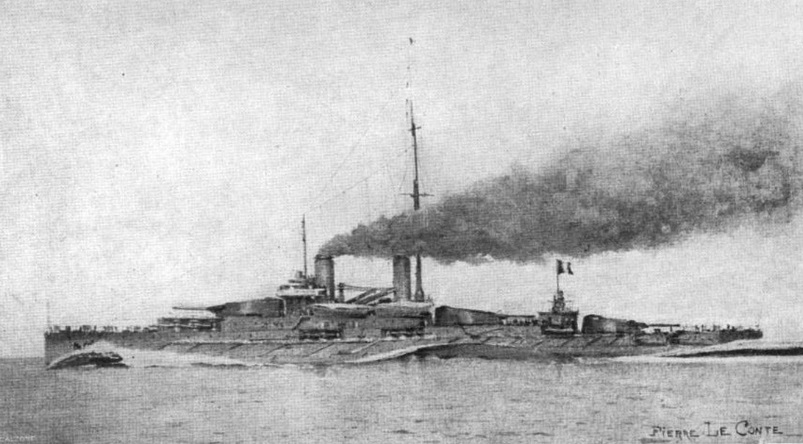French Battleship Gascogne
The Normandie class consisted of five dreadnought battleships ordered for the French Navy in 1912–1913. It comprised Normandie, the lead ship, Flandre, Gascogne, Languedoc, and Béarn. The design incorporated a radical arrangement for the twelve 340 mm (13.4 in) main battery guns: three quadruple-gun turrets, the first of their kind, as opposed to the twin-gun turrets used by most other navies. The first four ships were also equipped with an unusual hybrid propulsion system that used both steam turbines and triple-expansion steam engines to increase fuel efficiency.
The ships were never completed due to shifting production requirements and a shortage of labor after the beginning of World War I in 1914. The first four ships were sufficiently advanced in construction to permit their launching to clear the slipways for other, more important work. Many of the guns built for the ships were converted for use by the Army. After the war, the French Navy considered several proposals to complete the ships, either as originally designed or modernized to account for lessons from the war. The weak French post-war economy forestalled these plans and the first four ships were broken up.
The last ship, Béarn, which was not significantly advanced at the time work halted, was converted into an aircraft carrier in the 1920s. She remained in service in various capacities until the 1960s and was ultimately scrapped in 1967.
Built by Arsenal de Lorient, at Lorient, Gascogne was laid down on 1 October 1913 and launched on 20 September 1914. The incomplete hull was scrapped between 1923 and 1924.






